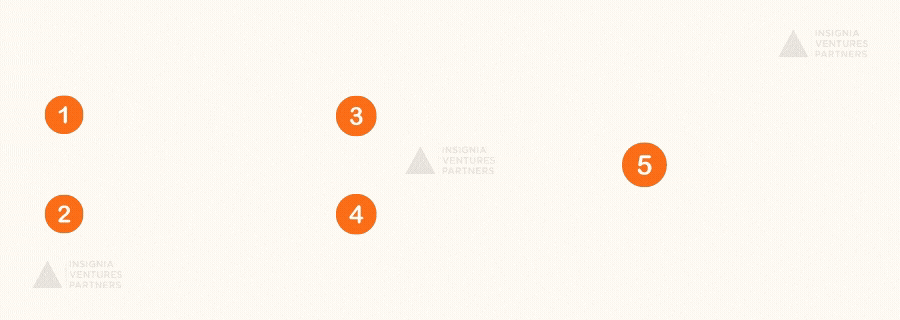Feedback is a foundational part of product development. On one hand the results of engaging with customers, be it data or insights, fuel the continuous improvement of a product while keeping it centered on the customer. For startups, it’s a cost-effective way to drive growth. At the same time, the very process of engaging with customers also deepens the ties of the customer with the product itself.
Some would even say that the very presence of feedback is proof that customers love the product. The fact that customers have complaints is a sign that they want the product to improve and thus, keep using it.
Zoom, for example, faced a lot of complaints as many countries went into lockdown, and the way the company handled these issues, from town halls with CEO Eric Yuan to the continuous rollout of improved features, has only helped them retain more of their customer base and even attract more to the fold.
That said, feedback can easily turn from proof of customer engagement and fuel for growth into a confusing, if not misleading, mess. To address these risks, product leaders come up with different strategies to manage the inflow of customer feedback and manage how the team responds to the constantly emerging pain points of customers.
Product leaders at two of our portfolio companies — Eezee and Edmicro — share their insights and best practices when it comes to capturing and processing customer feedback: Eezee co-founders Terrence Goh (Chief Design Officer) and Jasper Yap (CTO) and Edmicro CTO Que “Mario” Nguyen.
Featured portfolio companies
Eezee is a Singapore-based B2B marketplace that supports thousands of businesses in the region with their procurement needs through an ecommerce platform and software integrations with ERP platforms like SAP Ariba and Coupa. With more than 60000 products, 900 suppliers, and big-name customers like Shell and Raytheon, Eezee is growing their platform to become the go-to, end-to-end platform for procurement globally.
Read about how Eezee helped Shell Singapore with its procurement needs >>>
Edmicro is the Vietnam-based edtech company behind the platform Onluyen.vn. Onluyen.vn serves thousands of teachers and students every day, across more than 200 schools in Vietnam. Onluyen.vn positions itself as a mainstream edtech solution for assessment and personalized learning both in schools and at home.
Key Takeaways

A summary of advice from our portfolio product leaders from Eezee and Edmicro
(1) ‘Sell’ the product before it exists.
This does not mean “fake it until you make it.” Instead, it’s about getting customers involved before the finished product/iteration and having conversations with customers on what the product can be (as opposed to what it already is) for them.
In the early days of Eezee, as the founding team was building their website, they adopted this approach of sharing mock-ups of their marketplace with sellers. Co-founders Terrence and Jasper share that this approach never left their company as it grew.
“As our company matured, we continued this practice with customers who had additional requirements beyond our Minimum Viable Product (MVP). This allowed us to understand deeper customer and market needs. Tapping on direct customer feedback, we continued to scale up our product with newer features,” says Jasper.
They realized the effects of this approach rippled beyond addressing customer pain points. It also helped in producing deal-clinching features and generating greater curiosity with other customer prospects.
(2) Enable customer visibility to manage the supply of feedback.
Keeping customers aligned with product development goes beyond the mock-up and prototype phase and well into development and operations as well. This is important to prevent the team from getting an “oversupply” of feedback and distracted from the focus of a specific product development cycle.
As Terrence put it, “If there is a product-gap, we will communicate that with our customer and propose a phased rollout plan so that we don’t overwork the feedback loop while staying focused on delivering the core/key value proposition to our customers.”
Enabling visibility can close the gap on a host of other potential issues. One story from Eezee was that of a phone conversation with a procurement officer of one of their customers. She lamented about the lack of visibility on delivery updates.
“She prompted us to explore sending email notifications so that she doesn’t have to call into our hotline to enquire about the whereabouts of the order. We implemented her feedback and then, lo and behold, her suggestion contributed to an 80% reduction in incoming calls to ask about the status of their order delivery,” Eezee’s co-founders shared.
By increasing visibility on the operations behind the feature (ie the delivery progress), Eezee had reduced the number of potential feedback they would get under the umbrella of “delivery status issues”.
At the end of the day, for startups, the limited resources and stress of growth forces one to prioritize certain feedback over others. Hence visibility (or communication) on addressing pipeline issues can allay concerns of customers while still allowing the team to focus on key issues.
“One needs to understand the critical level [of the feedback] and decide the priority of the issue. Our capabilities and resources are limited and need to be optimized. If we can’t fix the issue right away, we apologize to the customer and give them an indication of when the issue can be fixed,” says Edmicro’s Que.
(3) Ensure accessibility and responsiveness.
Just as the goal of product development is to make the product “invisible,” or woven seamlessly into the experience of the user, so should feedback cycles be as intuitive for the customer. This means building for accessibility and responsiveness on the part of the company.
The Edmicro team makes sure that avenues for sending feedback are always visible to users. “Onluyen.vn is designed so that users can always give feedback or report issues with one click. We also have a hotline to answer and record incidents from users.”
It’s also important to the Edmicro team to act on important feedback in a timely manner. Responsiveness encourages more feedback to come from customers. It’s essentially a positive feedback loop that incentivizes giving feedback. “When we respond to important feedback quickly, the user will feel encouraged to give more feedback in the future.”
When addressing feedback, the Eezee co-founders point out that perfectionist tendencies can get in the way of responsiveness. Changing one thing can easily snowball into a whole bunch of other changes for the sake of staying ahead of the customer, but sometimes the anticipation and forced “foresight” won’t really make a difference.
“Looking past imperfections in favour of a quick version release may be a more effective strategy. In hindsight, there were many occasions when we spent time perfecting a page and later on, when we ran user tests, we realised that those additional improvements that we made didn’t really make much of a difference for the user,” the Eezee co-founders said.
Being responsive doesn’t just refer to the speed of the response, but also to the timing of the product rollout. Que shares the story behind a feature they recently implemented in response to feedback they got from one of the schools they work with. “In May, the Onluyen team visited a school in Bac Giang province. The school principal highly appreciated Onluyen and suggested a new feature that allows teachers to assign tasks (not homework) to students.”

Onluyen.vn team in school visit
What’s important to note is that the feature was suggested with summer vacation (July and August) in mind. “It would be useful during this period for teachers to assign tasks to their students and understand their student’s attitudes and behavior. For example, teachers assign a task that requires their students to self-study in Onluyen for at least 15 min in a day etc.”
For Onluyen, it would clearly be a win for all parties involved. It would increase user engagement on the platform, as well as help teachers and parents better manage and understand their children’s activities over the summer.
But what is key here is that they made sure to get it rolled out in time for summer vacation in July. Had they released it later, their users would not have been able to fully appreciate the value of the feature.
(4) Tap into various avenues to capture feedback and utilize various angles to understand it.
What enables a team to be accessible and responsive is the breadth of avenues they tap into to capture and respond to customer feedback. Eezee and Edmicro offered the following methods and tools as examples of what they use:
- Prototyping platforms like Figma enables teams to scale collaboration and participation in prototyping.
- Customer support software like Freshdesk (Freshchat) enables teams to engage in live chats with users.
- Behavior analytics tools like Hotjar maps out “realtime” engagement.
- For Edmicro, users interact with their team through Facebook page quite often.
- Account managers stand as key points-of-contact, which are important especially for B2B companies that deal with large organizations. For Edmicro, account managers make sure the school is taken cared of and maintains regular communication with the school principal and teachers to get timely feedback.
- Customer calls and visits (like the one the Onluyen team conducted in Que’s story) present an opportunity to get on-the-ground insight and deepen the relationship between the business and customer.
It’s a mixture of both technology tools and more “on-the-ground” methods of capturing and processing feedback. Feedback from these two different sources can easily conflate in one’s understanding of the problems or issues customers are really facing. In order to minimize discrepancies, it’s important to understand the various contexts of the users and look at their feedback from different angles.

Comparing various methods to capture and understand feedback according to how digital in nature they are, how “close” they are to the customers, and the level of involvement customers have in going out of their way to provide feedback
“The only way to minimise discrepancies is to constantly seek to understand the mental models of your user group. In this way, you can draw clearer insight and better your chances of being right,” says Terrence.
“It is important to analyze the feedback from different angles (e.g. different user roles, different use cases etc.). As a PM, you receive feedback from multiple sources; it is very important to understand the context,” adds Que.
And in order to analyze this feedback from different angles and efficiently roll-out fixes or new features, collaboration of product teams with the sources of feedback within the company (e.g. customer service, account managers, user research, business development) is important. “For example, we need to collaborate closely with sales and product deployment teams to understand feedback and work out an optimized pipeline for fixes/ new features,” says Que.
(5) It’s easy to get lost in the routine and process. Have a purpose within sight.
When capturing, processing, and addressing feedback becomes routine, it’s easy to lose sight of the purpose of having feedback in the first place. As Jasper points out, “A common mistake that many product leaders are guilty of is collecting feedback for the sake of collecting feedback. The key thing before undergoing such an exercise is to first have a strategic purpose behind why you are collecting feedback instead of just going through the motion.”
Some questions to ask before engaging with sources of customer feedback:
- Why are you collecting feedback?
- Is there a hypothesis that you want to prove?
- How will I make sense of the data?
- What are some biases in the experiment (e.g. survivorship bias)?
Without this purpose, it’s easy to end up with features that don’t necessarily align anymore with the business model of the company. A good product that satisfies customers doesn’t mean good business. And finding this purpose will require conversations across the team because sometimes, product improvement is not necessarily the answer to a customer pain point.
“In the blind pursuit of customer satisfaction, a product manager may ship features that end up being antagonistic to the company’s business model and strategy. In a product-driven company, the product must ultimately complement the business model. In our experience, the best approach is to have honest conversations with the business developers in the company to determine what’s best for the company — a product or a business model pivot,” says Terrence.
***
Amidst the nuances that can go into ensuring the whole feedback process remains seamless for the customer and focused for the company, the ultimate goal of doing all of this is to consistently become better. And sometimes, becoming better doesn’t always mean building more features or addressing every single customer feedback. With every change or iteration, product leaders need to be conscious about keeping the core user experience simple, pure, and unburdened. The Eezee co-founders quote their role model, Sir Jony Ive, former Chief Design of Apple, “It is very easy to be different, but very difficult to be better.”
Read our past product leader articles:
Paulo Joquiño is a writer and content producer for tech companies, and co-author of the book Navigating ASEANnovation. He is currently Editor of Insignia Business Review, the official publication of Insignia Ventures Partners, and senior content strategist for the venture capital firm, where he started right after graduation. As a university student, he took up multiple work opportunities in content and marketing for startups in Asia. These included interning as an associate at G3 Partners, a Seoul-based marketing agency for tech startups, running tech community engagements at coworking space and business community, ASPACE Philippines, and interning at workspace marketplace FlySpaces. He graduated with a BS Management Engineering at Ateneo de Manila University in 2019.